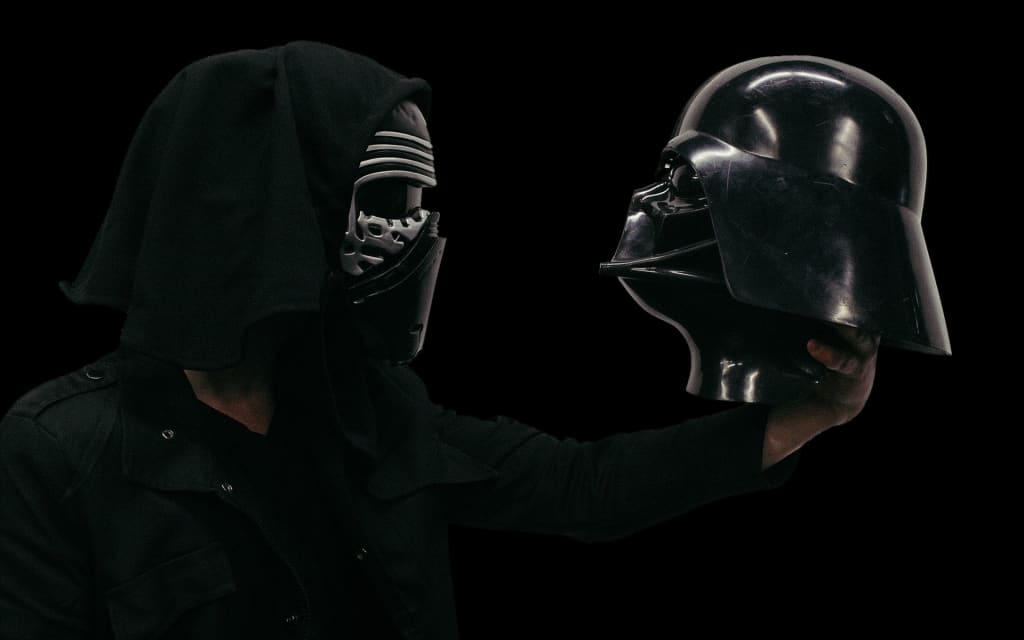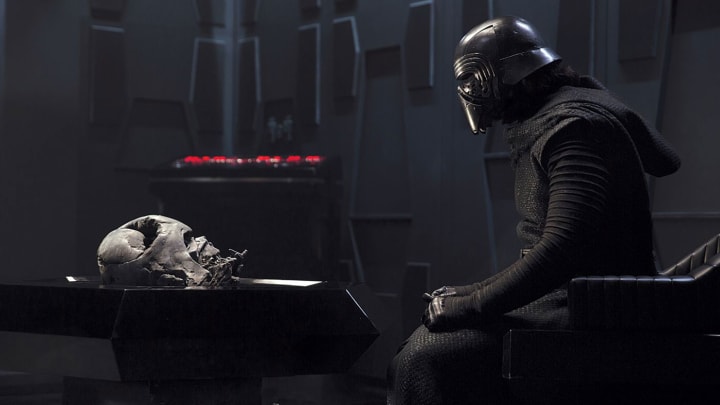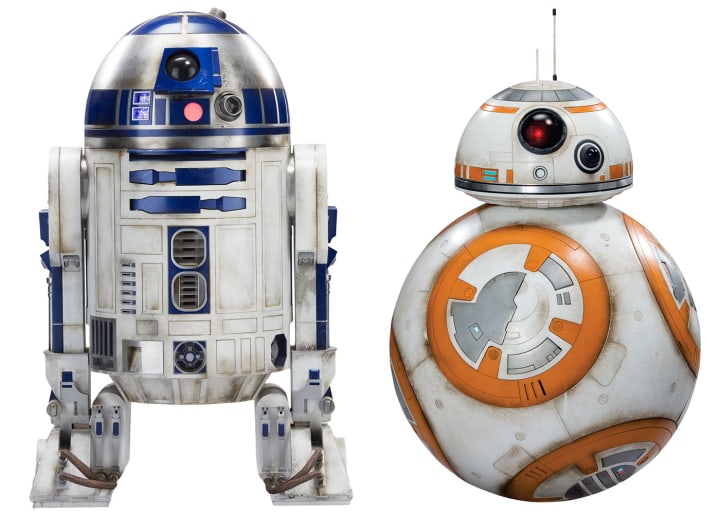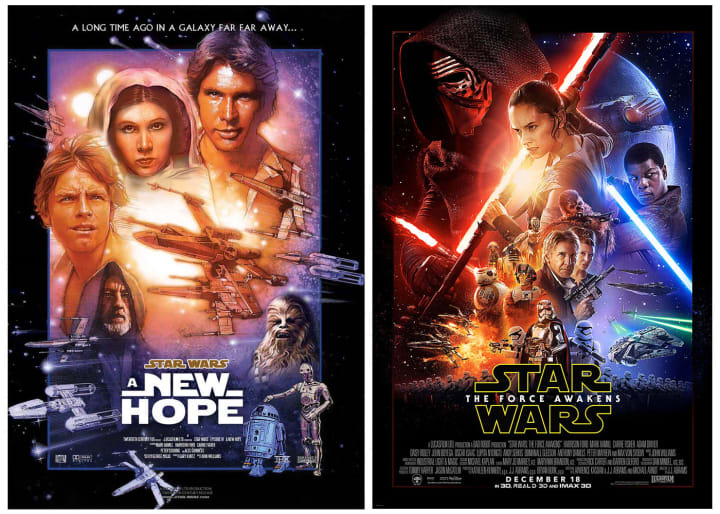New Generation of Star Wars
New and old generations alike find themselves fighting over the ownership of Star Wars.

When George Lucas unleashed Star Wars in 1977, he created a whole new generation of sci-fi fanatics from the Baby Boomers who’d been weaned on sci-fi serials. In many respects, George Lucas had managed to synthesize everything he’d loved from the old pulpy serial shorts from the 1940s, like Flash Gordon, while combining it with elements from the samurai films of Akira Kurosawa and World War II fighter pilot movies like The Dam Busters and 633 Squadron.
He synthesized all of these seemingly disparate elements to create a new fusion that was perfectly tailored to appeal to Baby Boomer tastes as well as their Generation X progeny. It’s no wonder that his film trilogy became something that redefined the business of Blockbuster cinema. But after that, Star Wars remained dormant for a long time. George Lucas pursued other creative endeavors like the Indiana Jones films and building his special effects company Industrial Light and Magic into the industry leading powerhouse it is today.
Star Wars didn’t exactly disappear, but it did grow dormant after the release of Return of the Jedi—with only a few scattered books and video games taking the reigns of continuing the epic saga of a galaxy far far away. Despite the dormancy of the franchise and the lack of new films, Star Wars would not go away. The audience that grew up with it wound up incorporating it into their own work, keeping it alive in the pop culture consciousness through references, parodies, and fan fiction. George Lucas would later return with the prequel films, but these largely proved to be a misfire that failed to recapture the adventure and magic of the originals. But then Bob Iger, the emperor of the empire of Disney, managed to wrestle Star Wars out of the hands of its original creator for the sum of $4 billion.

via io9
Disney's Star Wars
Disney’s mission was simple: to convert Lucasfilm into a Star Wars producing film factory that could stand alongside their other mini studios Pixar and Marvel. With the release of Episode VII: The Force Awakens, making over $2 billion in the box office, they’ve certainly succeeded.
But the question now remains: Who does Star Wars belong to? Disney and Abrams have managed to reverse engineer the same magic from the original films by making an almost beat for beat remake of the first film, but with a more inclusive approach for casting to appeal to millennials. It was the original generation of Baby Boomers who were responsible for turning Star Wars into a huge hit. They’re the ones who bought all of the original toys that turned Lucas into a billionaire. They’re the ones who kept the spark alive and, in some countries, even turned the Jedi into an officially recognized religion.
However, it’s the new generation that will ultimately be responsible for keeping Star Wars relevant and popular. It’s not surprising that Disney has even gone as far as to create original promotional materials to ensure that the kids and millennials of today are familiar with the intrepid band of heroes of yesteryear. As if in their propagation of Pixar movies, Disney princesses, and Marvel superheroes, they were afraid that someone might have forgotten the story of Star Wars or who heroes like Han Solo, Princess Leia, and Luke Skywalker truly are.

Left via Wookieepedia; Right via Wookieepedia
A Clash of Generations
But in this we’re seeing a generational clash with older fans who are lashing out against the newer fans who have come to embrace the new film. There was the huge debate that broke out on the internet where older fans called the new breakout character of Rey a "Mary Sue"; a derogatory term from the fanfiction community attributed to self-insertion characters who are too perfect and capable compared to their peers.
The Force Awakens also made great strides in bringing more racial and gender diversity to a galaxy far, far away with John Boyega, Oscar Isaac, and Daisy Ridley making a new core group of heroes that are much more inclusive than the original holy trinity of Han, Luke, and Leia. The diverse casting has lead to the #BoycottStarWarsVII hashtag promoted by some intolerant fans, with some more extremist hate groups even going as far as to accuse TFA of promoting white genocide.
While obviously these claims are preposterous and made mostly by hate groups affiliated with white supremacists, they do speak to a larger cultural clash of identities. After spending $4 billion on acquiring Stars Wars, it’s obvious that it’s in Disney’s best interests to make Star Wars films with the widest appeal possible. With demographics suggesting that within the next 30 years whites will become a minority group in the United States, there’s a huge financial incentive for Disney to make the next generation of Star Wars films appeal to a much broader audience than the original films.

Left via Screenfish; Right via Starwars.com
Casting Star Wars
This more diverse approach to casting Star Wars can even be seen in the upcoming anthology film Rogue One. Perhaps exhibiting one of the most diverse casts ever to be featured in a Star Wars film, it features Felicity Jones with well respected actors like Forest Whitaker and even the Ip Man himself, who will become the first main cast Asian man to ever be featured in a Star Wars film (instead of just as a background extra). With more anthology films in the newly branded "A Star Wars Story" film line, there will be plenty more opportunities to expand the scope of the universe to be one that’s a bit more inclusive than just a handful of people related to the Skywalker family.
Even episode eight and nine are expected to chart out new courses and present all kinds of new characters that’ll help broaden the very white space that Star Wars occupies...unless they find themselves behind a motion capture suit like Academy Award winner Lupita Nyong’o. The Legion of Leia will have little to complain about in Rogue One, with Felicity Jones appearing to play the kind of badass action role model women are craving to see on screen. We may even see Han Solo’s black wife from the comics make an appearance too.

Left via Independent; Right via Wookieepedia
Out with the Old
In many respects, bringing back the original cast is sort of an olive branch designed to figuratively pass on the torch to the next generation of heroes. The new generation supplanting the old is even a part of the metatextual narrative of The Force Awakens. The film opens with Rey living out of a crashed AT-AT on the desert planet of Jakku that’s littered with the remnants of the last battle between the Empire and the Rebellion from the original trilogy. From the very beginning, the film is scavenging off the legacy of everything from the original trilogy.
Nowhere is this more apparent than in the final scenes where Han Solo comes face to face with his son, Ben, on Starkiller base. Solo tries to reconnect with his wayward son, appealing to his sense of decency. But Ben, seeking to prove himself worthy of the dark side, murders Han Solo in cold blood with his lightsaber in an especially cruel fashion, as if chastising any viewers for their attachment and nostalgia for Star Wars past which has aged out of it’s prime. The fact that Ben has morphed into the villainous Kylo Ren, a character obsessed with Darth Vader and the past, offers more subtext that obsessing over the past will lead to a dark future.
The villains of the First Order consist of a group who worships everything that had been accomplished by the Empire and seek to finish their dark work of subjugating the galaxy. This rejection of the previous narrative is built into the text itself. Maybe that’s why some fans have become annoyed to see their favorite characters thrown to the wayside with Luke Skywalker only showing up for the final minute of the movie while The Force Awakens serves as a beat for beat remake of A New Hope with some elements of The Empire Strikes Back mixed in for good measure.
The excellent documentary The People vs. George Lucas delves deeper into the topic of cultural ownership and the often vehement relationship between fans and George Lucas. Who really can lay claim to Star Wars? Is it the original creator or is it the legions of fans who’ve taken his creation and weaved it into the fabric of their lives? When a piece of work becomes as pervasive as Star Wars has, does it leave the hands of whoever originated it and go into the collective consciousness of pop culture? Should it belong to everyone? The film ultimately comes to the conclusion that as an artist, George Lucas has the right to do whatever he wants to do with Star Wars, but he is still responsible to ensure that he respects the past by offering an unedited version of his creation that’s accessible to the public.
Maybe that’s the best compromise to The Force Awakens. It offers a bridge to fans of the old Star Wars while creating a fantastic starting point that invites the next generation to come along for the ride. Given the explosive box office shattering success of the film, even if the two generations come into conflict over who can claim cultural ownership over Star Wars, they both share a voracious appetite for more Star Wars. If nothing else, Disney has jump started Star Wars into becoming a new pillar of pop culture and their inclusive attitude towards its casting shows that they understand that no one group or generation truly owns Star Wars. Everyone should be invited to enjoy the spectacle and adventure of everyone’s favorite galaxy far far away.
The Star Wars The Digital Six Film Collection lets you join the Jedi Knights on their journey to defeat the Empire. The collection includes Special Editions of Star Wars Episodes I-VI, with bonus features including deleted scenes and commentaries accompanying each episode.
About the Creator
Isaac Shapiro
When not scrounging the internet for the best content for Jerrick Media, Isaac can be found giving scritches to feathery friend Captain Crunch.






Comments
There are no comments for this story
Be the first to respond and start the conversation.